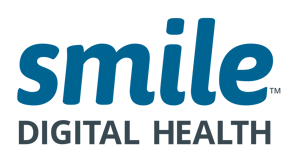With the pandemic showing no signs of slowing, timely access to quality data is vital. International health organizations, governments, and public health departments need this information to make decisions on COVID-19 prevention and control. Clinicians base their treatments on it, while researchers use it to gain insight into the current situation and plan for future events. Even citizens check it to inform their actions when they seek care or interact within their communities. The more available, comprehensive, and flexible these records are, the more valuable they become. From the general public, patients, doctors, and healthcare professionals who supply the data to the solution providers and developers who deliver the means to capture, share, and leverage it–we all have a role to play in promoting better global health.
The irony? In the midst of a pandemic, healthcare professionals are in the best position to identify what information would be most useful and the optimal way to communicate it. However, it is also the time when resources are most stretched, making it a challenge to develop a method to collect, report, and repurpose data in a meaningful way that realizes maximum benefit for all stakeholders. As a result, existing tools and their usage can be disparate when, more than ever, they should be integrated. This was a takeaway from the handling of the SARS outbreak. In the Institute of Medicine’s Learning from SARS: Preparing for the Next Disease Outbreak, workshop participants noted “the need to look into better standards for data capture and coordination during the course of an epidemic.”
Universal collaboration and interoperability are key for organizations to exchange information as simply, rapidly, and efficiently as possible.
These goals are also key to the connected solutions we develop at Smile Digital Health.
As maintainers of open source HAPI FHIR, we wanted to contribute our particular expertise and thought leadership in the realm of health system solutions to the pandemic response. Built on the FHIR platform, our COVID-19 toolkit is designed to help public health officials and healthcare providers track and communicate information received from participants, including the general public, patients, and clinicians.
Smile developers, skilled in open source FHIR implementations, coded the kit’s two apps. The first is a patient-facing self-assessment tool to help members of the community self-evaluate based on guidance from public health. This information is shared if user consent is granted. The second, a clinician-facing tool based on World Health Organization (WHO) recommendations, enables providers to document and submit clinical reports to public health officials online.
Together, the apps offer a comprehensive, accessible, interoperable, customizable, expandable, and developer-friendly solution that stakeholders can start using right now. Let’s explore some of the benefits of a pandemic case management system built on FHIR.
Comprehensive: Between the two apps, healthcare professionals can capture the patient journey from assessment through to treatment and outcomes, allowing for end-to-end case management.
Accessible: Available in the public domain, the apps sit in an open source COVID-19 repository using HAPI FHIR as an FHIR server. Developers can dive right in.
Interoperable: We wanted to make it simple for a healthcare organization anywhere in the world to do more with their data. The clinician app can be plugged into any FHIR compatible Electronic Health Record to allow for information exchange and to leverage existing data.
Customizable and Expandable: Populated by Smile developers using WHO forms, the apps are designed so they can be easily customized and built upon by users to meet their unique needs in the COVID-19 landscape. Moreover, they can be repurposed for a future pandemic. The in-born FHIR architecture stays the same, so developers can just change the form and plug and play to respond to any new disease outbreaks. The benefit? Contributors have the freedom to work on what they consider to be most important.
Developer-friendly: The ability to generate a FHIR questionnaire to a form is an exciting capability for our app contributors. All forms are generated automatically using dynamic forms, as opposed to being manually written. When you are dealing with potentially hundreds of forms with 200 fields each—not uncommon in the healthcare world–additions and changes can be hard to manage. A dynamic form reads the JSON file (which includes dynamic resources, like the questionnaire) and based on the questions, it generates the code for the entire form. This replaces the tedious and time-consuming process of writing each control one by one, offering a huge advantage to the development cycle.
While these tools contain the basic functionality needed to start making the necessary health connections, they are just a starting point. To realize their true value, we need the organizations, clinicians, and public health professionals who are on the front lines of the pandemic to test the apps, as well as provide subject matter expertise and input on ways to extend and customize the offering. We also encourage like-minded developers who have an interest in advancing an open source tool with potential for international reach to get involved in this initiative by using it in their own implementations and contributing code.
The healthcare solutions that we establish now can be used to shape the better research, prevention practices, controls, and treatments that were needed yesterday.
As a global community working together, we can get there faster.
GET INVOLVED:
Healthcare professionals and developers, do you have subject matter expertise that could help build a better solution, or want to contribute your coding skills and learn more about FHIR in the process? Contact us.


